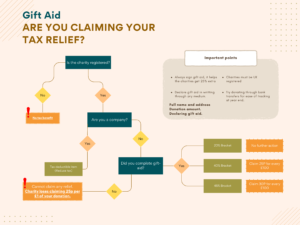The LT4L (Less Tax for Landlords) scam was a tax avoidance scheme that misled landlords into believing they could significantly reduce their tax liabilities through complex structures involving limited liability partnerships (LLPs) and trusts. Here’s a detailed look at how the scam worked, its flaws, and an example with figures to illustrate the financial implications.
How the LT4L Scam Worked
- Limited Liability Partnerships (LLPs):
- Landlords were advised to transfer their rental properties into LLPs.
- The LLPs included both individual and corporate partners.
- The scheme claimed that profits could be allocated to the corporate partner, benefiting from lower corporate tax rates.
- Trusts:
- Trusts were used to hold interests in the LLPs.
- The scheme suggested that this structure would allow properties to qualify for business property relief, avoiding inheritance tax (IHT).
- Profit Allocation:
- A significant portion of rental income was allocated to the corporate partner.
- This was intended to reduce overall tax liability by leveraging lower corporate tax rates.
Flaws and Issues
- Inheritance Tax (IHT) Misrepresentation:
- The scheme incorrectly claimed that rental properties could qualify for business property relief.
- Rental properties typically do not qualify for this relief, leading to potential IHT liabilities.
- Mixed Partnership Rules:
- The scheme attempted to exploit mixed partnership rules to allocate profits to the corporate partner.
- HMRC’s rules counter such arrangements, reallocating profits back to individual partners, resulting in higher tax liabilities.
- Capital Gains Tax (CGT) and Stamp Duty Land Tax (SDLT):
- Transferring properties into LLPs and trusts triggered CGT and SDLT liabilities.
- Many landlords were unaware of these additional costs, negating any purported tax savings.
Example with Figures
Let’s consider a buy-to-let property worth £350,000 to illustrate the financial implications, including SDLT, CGT, income tax, and penalties.
- Stamp Duty Land Tax (SDLT):
- For a property worth £350,000, the SDLT calculation is as follows:
- 0% on the first £250,000 = £0
- 5% on the next £100,000 = £5,000
- Total SDLT: £5,000
- For a property worth £350,000, the SDLT calculation is as follows:
- Capital Gains Tax (CGT):
- Assume the property was originally purchased for £250,000.
- Gain on sale: £350,000 – £250,000 = £100,000
- CGT rates for residential property (post-30 October 2024):
- 18% for basic rate taxpayers
- 28% for higher rate taxpayers
- If the landlord is a higher rate taxpayer:
- CGT: 28% of £100,000 = £28,000
- Income Tax:
- Rental income is subject to income tax.
- Assume annual rental income of £15,000.
- For a higher rate taxpayer (40%):
- Income tax: 40% of £15,000 = £6,000
- Penalties and Interest:
- HMRC may impose penalties for underpaid taxes.
- Assume a penalty rate of 15% on the underpaid tax (CGT and income tax).
- Penalty on CGT: 15% of £28,000 = £4,200
- Penalty on income tax: 15% of £6,000 = £900
- Total Penalties: £4,200 + £900 = £5,100
Total Financial Implications
- SDLT: £5,000
- CGT: £28,000
- Income Tax: £6,000
- Penalties: £5,100
- Total: £44,100
Some participants in this scheme have reportedly faced combined Capital Gains Tax (CGT) and Stamp Duty Land Tax (SDLT) liabilities amounting to £800,000!
Conclusion
The LT4L scam promised significant tax savings but ultimately led to substantial financial and legal consequences for those involved. Landlords faced unexpected SDLT, CGT, income tax liabilities, and penalties. If you or someone you know has been affected by this scheme, it’s crucial to seek professional advice to address any outstanding tax issues and navigate the legal implications.









